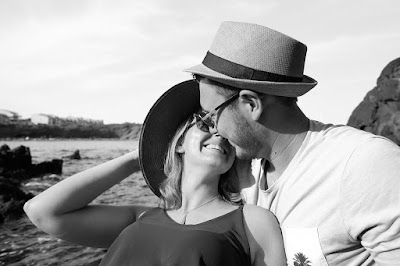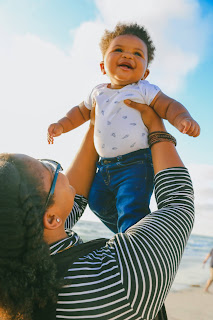Exercising with your Baby
It's
hard to exercise as a new mum. Why should I bother?
But doing some gentle exercise after
you've had your baby will lift
your mood and help your body to recover
from pregnancy and birth.
If you exercise regularly after your baby is
born you are more likely to:
Regular exercise when you're a new mum may also
reduce the symptoms of postnatal depression. You may want to join an exercise class for extra motivation.
Combining regular exercise with healthy eating
is the best way to lose the weight that you gained in pregnancy. This will help
you to gradually get your pre-pregnancy body back.
Try
some gentle stretches, and keep doing your pelvic floor
exercises. These are easy to do while your baby
is settled, or asleep. You don't need any special equipment, though you may
find an exercise ball useful.
You can carry on with stretches, and then add
more strenuous movements once you've had your postnatal check, as long your GP says that it's OK.
If you want to try an exercise DVD, check that
it's endorsed by a professional body. Look for The Guild of Pregnancy and
Postnatal Exercise Instructors and the Association of Chartered
Physiotherapists in Women's Health on the sleeve.
If you've
already got an exercise bike, cross trainer or other equipment at home, check
with your health visitor before you use them. Doing several short bursts
of activity can be just as beneficial as one long session , so just do what you can fit into each day.
Gradually increase your exercise sessions, once
you feel up to it. The recommendation for adults is to be active for at least
30 minutes a day, five days a week.
If you need some motivation, you could walk with
a friend, or join a postnatal buggy fitness class. Search online to find one
near you, or ask your health visitor.
Some classes are free. You can also get
to know other mums while you're exercising.
Some evidence suggests that joining this type of class may combat feelings of
isolation in new mums, which may help to prevent postnatal
depression. Don't worry if you are an exercise
novice, as these classes cater for all fitness levels.
Some gyms and postnatal exercise or aquacise
classes have a creche, or let you bring your baby along. Your local gym,
hospital, children's centre, midwife and health visitor will be able to tell
you more.
Try to find a class taught by a midwife, physiotherapist or an instructor who specialises in
postnatal exercise. The Guild of Pregnancy and Postnatal
Instructors has a list of specially trained
teachers.
If there's no creche, you could share
babycare with a friend, or let your partner
put in some baby time while you go for a workout at the weekend.
When your baby gets a bit older, you can jog
with him in a special buggy, if you
like. However wait until he is at least eight months old before you take him
out on a bike, as he needs to be able to sit up before you can put him in a bike trailer or
cycle carrier. Younger babies don't have the neck strength to hold their heads
upright and support the weight of safety helmets.
But doing some gentle exercise after you've had your baby will lift your mood and help your body to recover from pregnancy and birth.
If you exercise regularly after your baby is born you are more likely to:
Regular exercise when you're a new mum may also reduce the symptoms of postnatal depression. You may want to join an exercise class for extra motivation.
Combining regular exercise with healthy eating is the best way to lose the weight that you gained in pregnancy. This will help you to gradually get your pre-pregnancy body back.
You can carry on with stretches, and then add more strenuous movements once you've had your postnatal check, as long your GP says that it's OK.
If you want to try an exercise DVD, check that it's endorsed by a professional body. Look for The Guild of Pregnancy and Postnatal Exercise Instructors and the Association of Chartered Physiotherapists in Women's Health on the sleeve.
Gradually increase your exercise sessions, once you feel up to it. The recommendation for adults is to be active for at least 30 minutes a day, five days a week.
If you need some motivation, you could walk with a friend, or join a postnatal buggy fitness class. Search online to find one near you, or ask your health visitor.
Some classes are free. You can also get to know other mums while you're exercising. Some evidence suggests that joining this type of class may combat feelings of isolation in new mums, which may help to prevent postnatal depression. Don't worry if you are an exercise novice, as these classes cater for all fitness levels.
Some gyms and postnatal exercise or aquacise classes have a creche, or let you bring your baby along. Your local gym, hospital, children's centre, midwife and health visitor will be able to tell you more.
Try to find a class taught by a midwife, physiotherapist or an instructor who specialises in postnatal exercise. The Guild of Pregnancy and Postnatal Instructors has a list of specially trained teachers.
If there's no creche, you could share babycare with a friend, or let your partner put in some baby time while you go for a workout at the weekend.
When your baby gets a bit older, you can jog with him in a special buggy, if you like. However wait until he is at least eight months old before you take him out on a bike, as he needs to be able to sit up before you can put him in a bike trailer or cycle carrier. Younger babies don't have the neck strength to hold their heads upright and support the weight of safety helmets.




Comments
Post a Comment